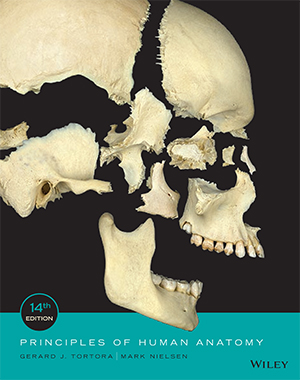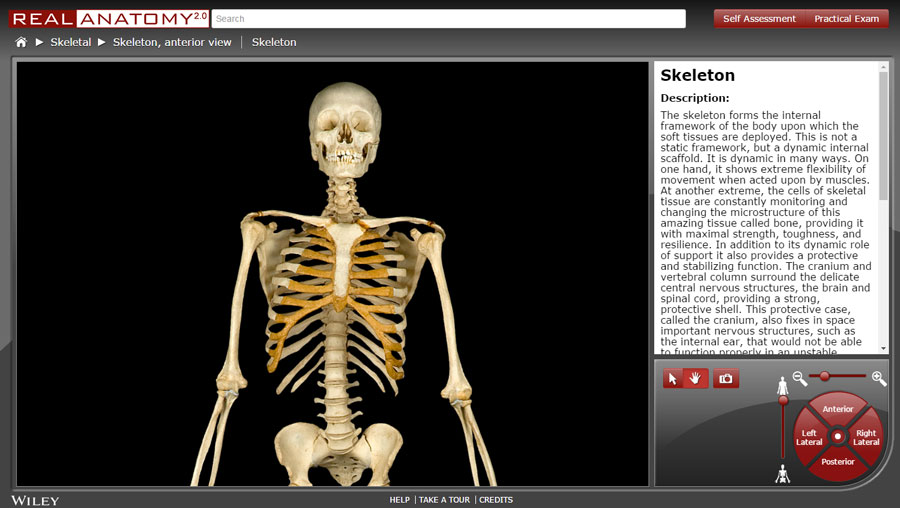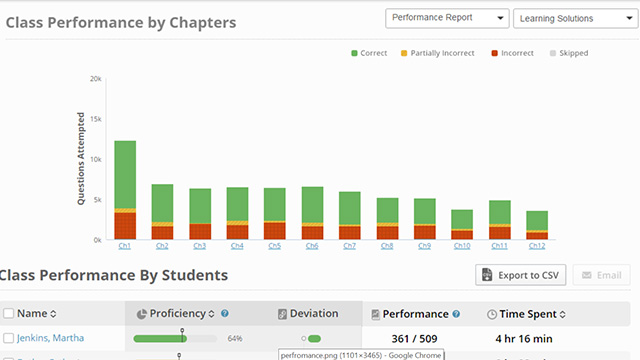
Principles of Human Anatomy, 14th Edition
By Gerard Tortora and Mark Nielsen
Principles of Human Anatomy, 14th Edition is full of spectacular visuals and dynamic content. Designed for the one-term human anatomy course, this program raises the standard for excellence in this discipline with its enhanced illustrations, refined narrative, and dynamic resources. Principles of Human Anatomy is a rich digital experience, giving students the ability to learn and explore human anatomy both inside and outside of the classroom.
The next generation of WileyPLUS for Principles of Human Anatomy gives instructors the freedom and flexibility to tailor content and easily manage their course to keep students engaged and on track.
Schedule a Demo Sign Up for a Test Drive Adopt WileyPLUSWant to learn more about WileyPLUS? Click Here

Anatomical structures of the body are presented in a true-to-life way.
Real Anatomy 2.0 3-D imaging software allows students to dissect through over 40 layers of a real human body to study the anatomical structures of all body systems. Using Real Anatomy, students can interact and practice with a real cadaver as much as they need from the comfort of their own computer.

Adaptive practice prepares students for class or quizzes and exams.
Active retrieval of information with practice questions is proven to improve retention of information better than re-reading or reviewing the material, and students who use adaptive practice to prepare for exams do significantly better than those who do not. Students begin with a quick, section-level diagnostic to determine their initial level of understanding, and they can use the dashboard and quick reports to see what topics they know and don’t know.
Concept lectures encourage students to become active learners.
Created by author Mark Nielsen, Concept Lectures provide a great resource for professors who want to incorporate more of a flipped classroom into their teaching. These video lectures are a dynamic way to help students focus on key concepts and patterns in anatomy.

GERARD J. TORTORA is a professor of biology at Bergen Community College in Paramus, New Jersey, where he teaches human anatomy and physiology as well as microbiology. He received his bachelor’s degree in biology from Fairleigh Dickinson University and his master’s degree in science education from Montclair State College. He has been a member of many professional organizations including the Human Anatomy and Physiology Society (HAPS).

MARK NIELSEN is a professor in the Department of Biology at the University of Utah. For the past 31 years, he has taught anatomy, neuroanatomy, embryology, human dissection, comparative anatomy, and an anatomy teaching course to over 25,000 students. He has prepared and participated in hundreds of dissections of both humans and other vertebrate animals. All his courses incorporate a cadaver-based component to the training with an outstanding exposure to cadaver anatomy. He is a member of the American Association of Anatomists (AAA), the Human Anatomy and Physiology Society (HAPS), and the American Association of Clinical Anatomists (AACA). Nielsen has a passion for teaching anatomy and sharing his knowledge with his students. In addition to teaching, he has also trained and served as a mentor for over 1,200 students who have worked in his anatomy laboratory as teaching assistants. His concern for students and his teaching excellence have been acknowledged through numerous awards.
1. An Introduction to the Human Body
2. Cells
3. Tissues
4. Development
5. The Integumentary System
6. Bone Tissue
7. The Skeletal System: The Axial Skeleton
8. The Skeletal System: The Appendicular Skeleton
9. Joints
10. Muscular Tissue
11. The Muscular System
12. The Cardiovascular System: Blood
13. The Cardiovascular System: The Heart
14. The Cardiovascular System: Blood Vessels
15. The Lymphatic (Lymphoid) System and Immunity
16. Nervous Tissue
17. The Spinal Cord and the Spinal Nerves
18. The Brain and the Cranial Nerves
19. The Autonomic Nervous System
20. Somatic Senses and Motor Control
21. Special Senses
22. The Endocrine System
23. The Respiratory System
24. The Digestive System
25. The Urinary System
26. The Reproductive Systems
27. Surface Anatomy

